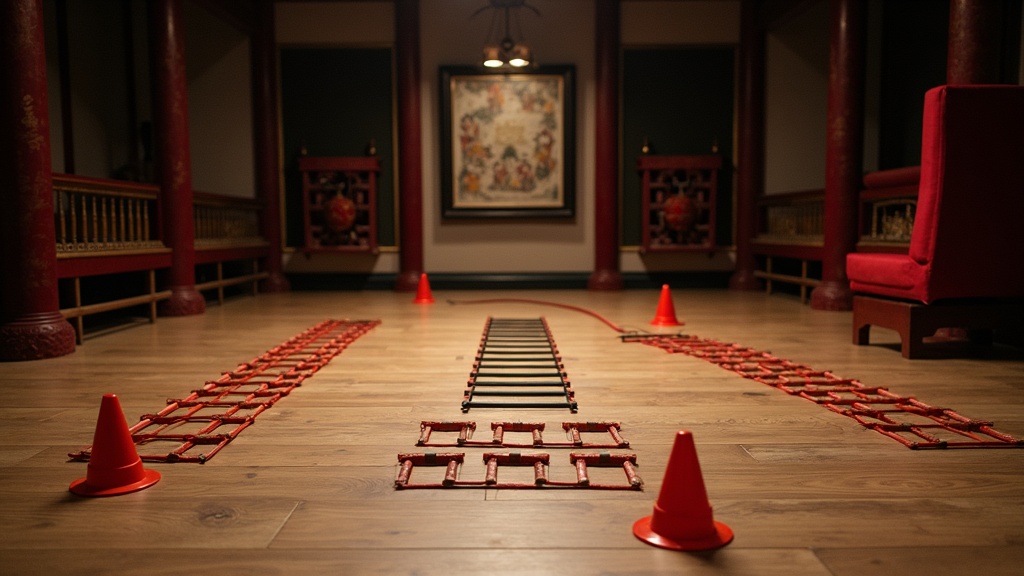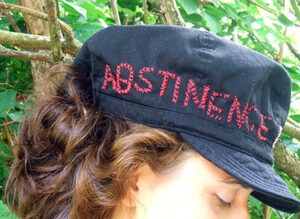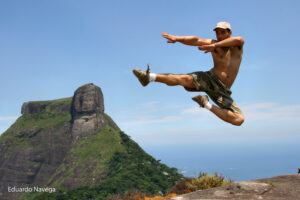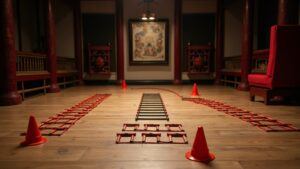Kung Fu footwork is a foundation for speed, agility, and performance in traditional martial arts. Learning how to move swiftly and maintain control builds the confidence I need for sparring, self-defense, or competitions. For beginners, practicing footwork drills can feel repetitive, but sticking with it pays off in better control and faster reactions. I’ve gathered my experience and research to create a practical guide that introduces the best footwork drills for speed and agility in Kung Fu.

The Importance of Footwork in Kung Fu
Footwork in Kung Fu shapes how I attack, defend, and keep my balance. Good footwork means I can dodge, close distance, and set up strikes with less effort. The Chinese martial arts tradition spends a lot of training time on drills that improve these qualities. When I skip or rush through footwork practice, I notice my movements start feeling slow and stiff. That’s why I suggest building a strong footwork base right from the start, no matter what style I study.
Kung Fu schools, from Wing Chun to Northern Shaolin, each have their unique footwork patterns. Core principles, though, stay the same: lightness, stability, and quick directional changes help me find my way through any sparring or self-defense scenario. By understanding these basics, I get a head start in any Kung Fu system. Regular training allows me to step up my overall skill, whether for martial arts or everyday life.
Understanding Basic Kung Fu Stances
Every great footwork drill starts with knowing the basic stances. Some names might differ between styles, but the function is similar. Being comfortable moving in and out of these stances teaches me how to switch up weight correctly and react faster. Here are a few I focus on in my daily training:
- Horse Stance (Ma Bu): This stance builds my leg strength and teaches me to stay planted when needed. I hold this stance to increase endurance and give a boost to my balance.
- Bow Stance (Gong Bu): Often used for stepping forward or backward, it trains me to drive off the back leg and lunge explosively, which allows me to move with power.
- Cat Stance (Mao Bu): Forces me to keep the weight mostly on one leg, ready for quick shifts or kicks—a critical lesson for fast reactions.
- Crane Stance (He Bu): Develops balance and the ability to lift one knee quickly; this comes in handy for blocking or countering kicks and for sudden directional changes.
Core Kung Fu Footwork Drills for Beginners
I always start my sessions with fundamental drills that anyone can follow. These movements build my coordination and help me avoid common mistakes like crossing feet or stumbling. If you’re new to Kung Fu or want to reinforce strong habits, these exercises are a solid place to begin.
- Step and Drag: I step out with one foot and drag the other to meet it. This keeps my feet shoulder width apart, and helps protect my balance.
- Box Drill: I move in a square, stepping forward, sideways, backward, and then sideways back to where I started. Focusing on smooth transitions helps me adjust direction quickly in sparring.
- Triangle Step: I picture a triangle on the floor and step along its three points. This trains me to angle off the line of attack and find safer positions during a fight.
- Switching Stances: Quick transitions from horse stance to bow stance and back teach me how to switch up my center of gravity with speed and confidence.
Drills That Build Agility and Reaction Time
Speed on its own isn’t much use if I’m off balance or can’t change direction quickly. That’s why I add agility drills that combine footwork, timing, and awareness. These exercises push my reflexes and coordination, and they’re easy to fit into a home routine.
- Ladder Footwork: I use an agility ladder or just draw one with chalk. Moving in and out of the squares builds rapid foot placement and gets my legs used to quick, precise movements.
- Shadow Sparring: I picture an imaginary opponent and move as if defending or attacking. Reacting to this mental image sharpens my decision making and helps me link up footwork with upper body moves.
- Partner Mirror Drill: I team up with someone who copies my footwork or, even better, tries to outstep me. This keeps both of us alert and encourages spontaneous changes in direction.
Sometimes, I add cone drills or fast step overs to further step up my agility. These additional exercises keep my routines interesting and engage my mind and body in different ways.
Common Footwork Mistakes and How to Avoid Them
During my early days, I made a lot of sloppy footwork errors that stalled my progress. Here are some issues I spot often, along with the fixes I use:
- Wide or Narrow Steps: Taking steps that are too wide or too narrow ruins my balance. I fix this by practicing in front of a mirror until my steps look uniform and solid.
- Heel Striking: Landing heel first slows me down. I pay close attention to keeping weight on the balls of my feet for faster movement and better spring.
- Not Staying Low: Standing up too tall during drills makes it hard to react. I remind myself to bend my knees and keep my hips low, which adds power to every step.
Picking up on bad habits and taking time to correct them early helps speed up my overall progress and protects me from injury. Bringing awareness to small details now means fewer problems later.
Useful Tips for Improving Speed and Agility
I’ve found that small changes in my practice give a boost to my footwork. Here are some strategies I use to take up a notch my speed and agility during drills:
Train Light: I wear lightweight shoes or go barefoot to improve the strength and awareness in my feet. Feeling the ground helps me react quicker and adjust my stance with ease.
Add Resistance: Sometimes I strap on ankle weights for short, careful drills. After removing them, my regular movements feel lighter and faster, which gives a noticeable boost to my foot speed.
Mix It Up: I combine traditional Kung Fu footwork with modern fitness drills like cone hops, jump rope, or fast sprints. This keeps my training fresh, challenges different muscle groups, and keeps me motivated.
Consistency: Investing just 15 or 20 minutes in focused footwork practice each session makes a huge difference. With regular practice, I spot the progress in how I move and react both on the training floor and in daily life.
Stay Relaxed: Keeping my upper body relaxed while practicing helps improve fluidity and prevents stiffness. Staying loose in the shoulders makes transitions smoother and reactions snappier.
How to Safely Add Footwork Drills to Your Daily Routine
When I make my training routine, I always start with a light warmup. Cold muscles are more likely to strain, especially in the legs and ankles. Here’s my go-to sequence for safe practice:
- Stretch the calves, hamstrings, and ankles gently for several minutes to make muscles more flexible.
- Run in place or do jumping jacks for a minute to increase heart rate and prepare the body for action.
- Begin footwork drills at half speed, slowly ramping up to full-speed repetitions only after feeling ready.
- Finish by moving while defending with blocks or strikes, if you are comfortable with these moves.
I keep each drill short—no more than 60 seconds at a time—followed by a brief rest. In my experience, quality and control are much more important than sheer speed without good technique.
If you feel any discomfort or soreness, take a break and stretch again. Prioritizing safety means you can keep practicing long term and see more progress without setbacks.
Real-World Benefits of Fast, Agile Footwork
Working hard on footwork training has given me more than just technique. I feel lighter on my feet both inside and outside the training hall. Here are some concrete ways that speed and agility help me:
- Better Defense: I can avoid attacks or reposition before my opponent gets too close.
- More Powerful Attacks: Strong footwork lets me put my full body behind each strike. I generate more force, which increases my effectiveness in sparring and self-defense.
- Improved Fitness: Even basic drills give a noticeable boost to my leg strength, overall balance, and reaction speed. This carries over to sports, running, or any physical activity.
- Confidence: Knowing I can move quickly gives me a sense of preparedness in stressful situations. This confidence is just as valuable in martial arts as it is in regular daily life.
These benefits are not limited to the training hall; they make daily movement smoother, safer, and more efficient, whether I’m playing a sport, carrying groceries, or just crossing a busy street.
Frequently Asked Questions
Here are some questions I’ve received from beginners about Kung Fu footwork, plus my practical answers.
Question: How often should I practice footwork drills?
Answer: I recommend starting with three short sessions per week. Consistency is much more effective than long, super intense workouts when you’re getting started.
Question: Is it okay to train Kung Fu footwork at home?
Answer: Training at home is a great way to build habits. Just make sure you have enough space and check your form to avoid picking up bad habits or risking injury.
Question: What if I get bored during drills?
Answer: I switch up footwork routines or practice with a friend. Adding music or timing myself for speed adds a fun challenge and keeps things interesting.
Beginner Kung Fu Footwork in Everyday Life
When I work on footwork, I notice improvements in other parts of my day. Walking up stairs becomes much smoother, and my balance is noticeably better on buses or trains. The focus and coordination needed for Kung Fu drills seem to help with any activity that demands quick responses, balance, or mental sharpness.
Trying out these footwork drills doesn’t require any special equipment or pricey gym memberships. With a bit of clear space, comfortable shoes, and a plan to keep practicing regularly, I continue to see real benefits both in my martial arts and health overall. Becoming faster and more agile is a goal anyone can reach—one step at a time.





